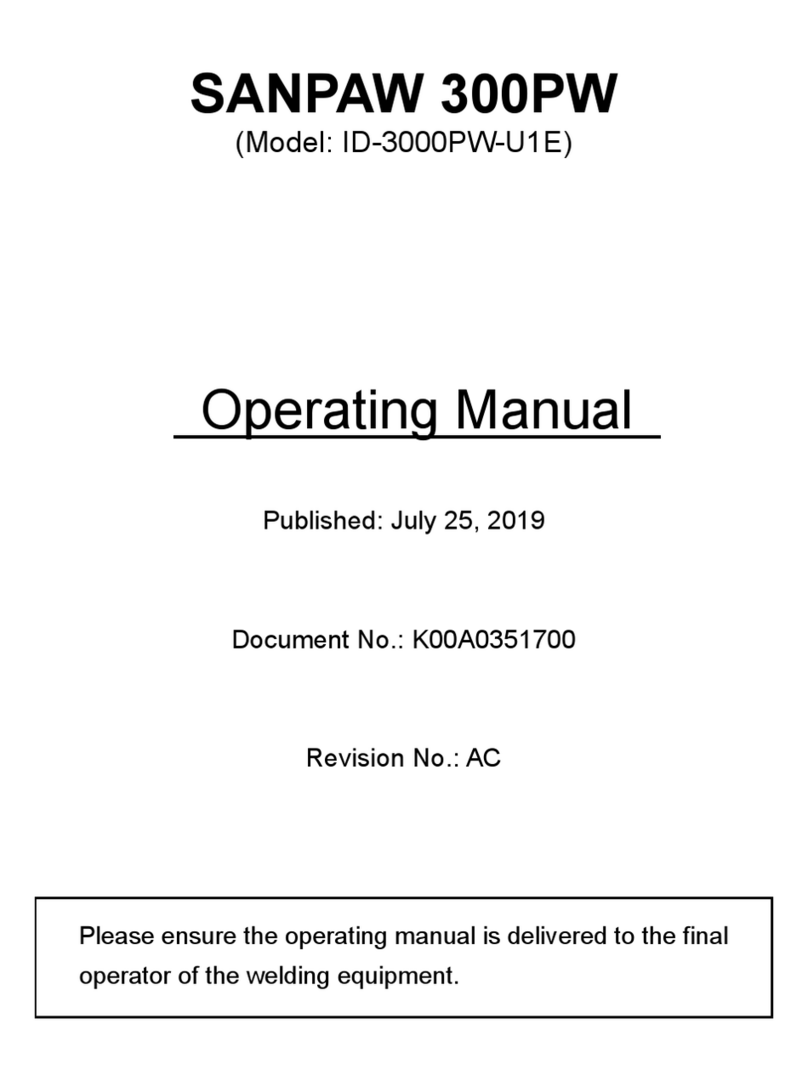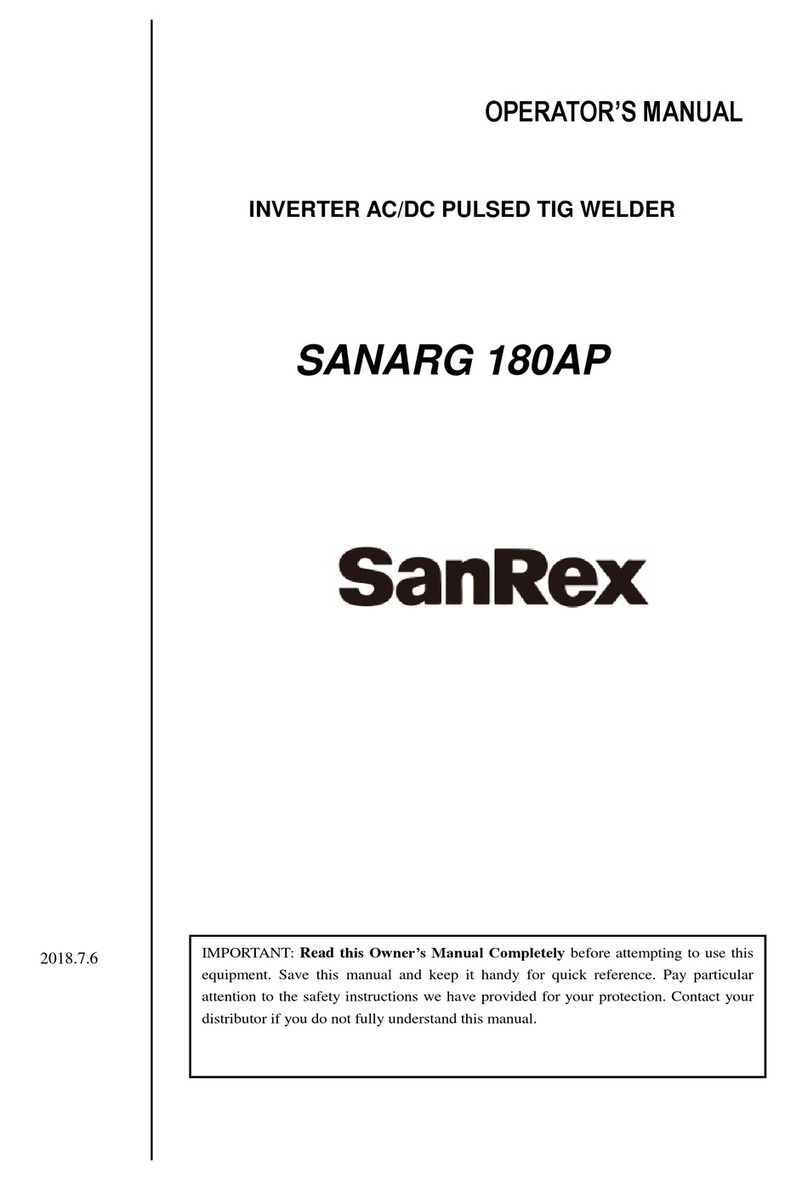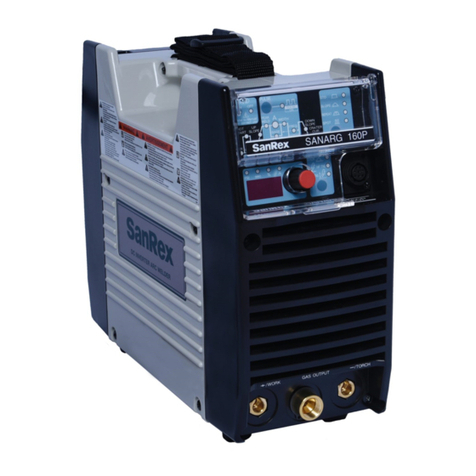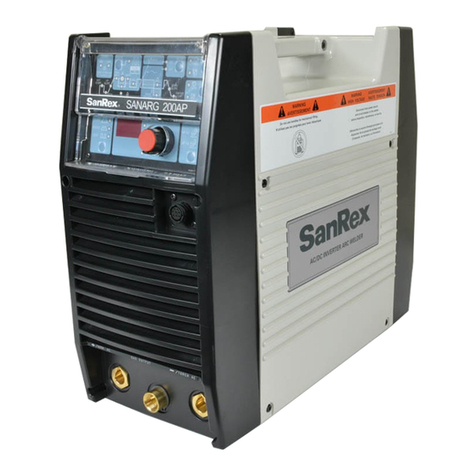
Contents
1.0 SAFETY REGULATIONS AND REQUIREMENTS.................................................................. 9
1.01 Notes, Cautions and Warning Annotations.................................................................................. 9
1.02 Safety Recommendations........................................................................................................... 10
1.03 Welding Symbols....................................................................................................................... 11
1.03.01 Safety Symbol Legend.......................................................................................................... 11
1.03.02 Graphic Symbol Legend....................................................................................................... 17
1.04 Safety Precautions....................................................................................................................... 18
1.05 Safe Operation of the Welder and Personal Protection ............................................................. 19
1.05.01 Important Safety Precautions................................................................................................ 19
1.05.02 Electric Shock....................................................................................................................... 20
1.05.03 Gases and Fumes................................................................................................................... 21
1.05.04 Fire and Explosions............................................................................................................... 22
1.05.05 Arc Welding Rays, Noise and Spatter or Slag...................................................................... 23
1.05.06 Gas Cylinders........................................................................................................................ 24
1.06 Reference Publications............................................................................................................... 25
2.0 INTRODUCTION AND DESCRIPTION................................................................................... 27
2.01 General Information................................................................................................................... 27
2.02 Welding Machine Description................................................................................................... 27
2.03 300AP Power Source Features................................................................................................... 27
2.04 Welding Output Voltage and Amperage Curves ....................................................................... 30
2.04.01 300AP V/A Output Curves................................................................................................... 30
2.05 Functional Block Diagram......................................................................................................... 31
3.0 INSTALLATION RECOMMENDATIONS............................................................................... 33
3.01 Transportation Methods............................................................................................................. 33
3.02 Environment............................................................................................................................... 34
3.03 Machine Grounding & High Frequency Interference................................................................ 34
3.03.01 Grounding............................................................................................................................. 34
3.03.02 High Frequency Introduction................................................................................................ 34
3.03.03 High Frequency Interference ................................................................................................ 35
3.04 Location ..................................................................................................................................... 36
3.05 Electrical Input Connections & Requirements .......................................................................... 36
3.05.01 Input Power........................................................................................................................... 36
3.05.02 Fusing.................................................................................................................................... 37
3.05.03 Electrical Input Connections................................................................................................. 38
3.06 Specifications............................................................................................................................. 40
3.06.01 Input/Output.......................................................................................................................... 40
3.06.02 General Information.............................................................................................................. 41
3.07 Duty Cycle................................................................................................................................. 42
4.0 OPERATOR CONTROLS, DIMENSIONS & OUTLINE ......................................................... 43
4.01 Dimensions and Outline............................................................................................................ 43
4.02 Operator Controls, Location and Functionality......................................................................... 43
4.03 14-PIN Remote Control Receptacle........................................................................................... 46
4.04 Parameter Display Panel............................................................................................................ 47
4.05 Function Selection ..................................................................................................................... 51
4.06 Parameter Selection ................................................................................................................... 52
4.07 Internal Parameter Selection...................................................................................................... 53
5.0 SET-UP FOR BASIC STICK (SMAW) AND TIG (GTAW) WELDING................................. 55
6.0 SEQUENCE OF OPERATION................................................................................................... 56
6.01 Stick Welding............................................................................................................................. 58
6.01.01 Stick Welding Sequence with Voltage Reduction Device Disabled .................................... 59

































